The first benchmark results of Nvidia's GB10 Superchip for compact AI workstations in Geekbench 6 have been published. While the processor promises serious performance for AI applications, its compute capabilities seem relatively modest. The CPU trails behind Apple's entry-level M3 and Qualcomm's higher-end Snapdragon X Elite system-on-chip (SoC), and we are not even talking about high-end offerings. It should be noted that we are talking about a pre-release product running on Windows 11 Enterprise Insider Preview.
Nvidia's GB10 Superchip system-in-package (SiP) comprises a Grace CPU packing 10 high-performance Arm Cortex-X925 cores (at up to 3.90 GHz) and 10 energy-efficient Cortex-A725 cores, as well as a Blackwell GPU that can deliver 1 PetaFLOPS of FP4 compute performance for AI applications. The SiP has a 256-bit memory interface for 128 GB of unified LPDDR5X memory with an up to 273 GB/s bandwidth (so, the memory capabilities of the SiP are the same as in the case of Apple's M4 Pro).
Arm's Cortex-X925 core, clocked at 3.90 GHz, delivers fairly strong single-threaded performance, achieving a Geekbench 6 single-thread score of 2,960. This puts GB10 nearly on par with Qualcomm’s Snapdragon X Elite and close to Apple's M3, which were launched in 2024 and 2023, respectively. Both processors are known for their high IPC performance, and since we are talking about a processor for an AI workstation here, single-thread performance matters.
Swipe to scroll horizontally
Core Configuration | 10P + 10E | 12P | 4P+4E | 6P + 6E | 12P+4E | 24P + 8E | 4P + 6E | 10P + 4E | 12P + 4E | 6P + 8E | 8P + 16E/24T | 8P+16E/32T | 16P/32T | 16P/32T |
Max Frequency | 3.90 GHz | 4.20 GHz | 4.05 GHz | 4.05 GHz | 4.05 GHz | 4.05 GHz | 4.40 GHz | 4.50 GHz | 4.50 GHz | 5.0 GHz | 5.70 GHz | 6.0 GHz | 5.70 GHz | 5.70 GHz |
Process Technology | N3E | N4 | N3B | N3B | N3B | N3B | N3E | N3E | N3E | N3B | N3B | 10nm ESF | N4P | N5 |
Single-Core | 2960 | 2939 | 3076 | 3170 | 3187 | 3221 | 3747 | 3942 | 4065 | 2983 | 3447 | 3021 | 3537 | 3130 |
Multi-Core | 10682 | 15654 | 11863 | 15307 | 21890 | 27749 | 14900 | 22405 | 26105 | 18582 | 25703 | 22421 | 23344 | 22984 |
However, by today's standards, roughly 3000 points in Geekbench 6 single-thread benchmark is a good, but hardly an outstanding result. Apple's M4, AMD's Ryzen 9950X, and Intel's Core Ultra 9 285K offer considerably higher single-thread performance despite having a significantly slower memory subsystem. Unlike Apple's M4 Pro, which has a 256-bit LPDDR5X memory subsystem with a massive 273 GB/s bandwidth, Nvidia's GB10 is 33%, or 1,000 points behind.
Of course, a 20-core configuration implies strong multi-thread performance. However, GB10's score of 10,682 points in Geekbench 6 is modest at best. The unit is behind Apple's M3 (which has eight cores) and is 39% behind Apple's M4 (which has 10 cores). Nvidia's GB10 also falls short of Qualcomm's 12-core Snapdragon X Elite's score of 15,654 and is dramatically behind Apple’s M4 Max or AMD’s Ryzen 9 9950X CPUs, all of which score above 20,000.
Such a poor result of Nvidia's GB10 may indicate that its Cortex-A725 efficiency cores contribute less to the overall score, or do not work at all due to issues with scheduling, which could be solved by Windows 11 or Nvidia microcode update. Alternatively, this may mean that GB10, in its current form, is not optimized for CPU-heavy workloads and is not delivering maximum performance in AI applications under strict power envelopes and thermal budgets of compact platforms like Nvidia's DGX Spark.
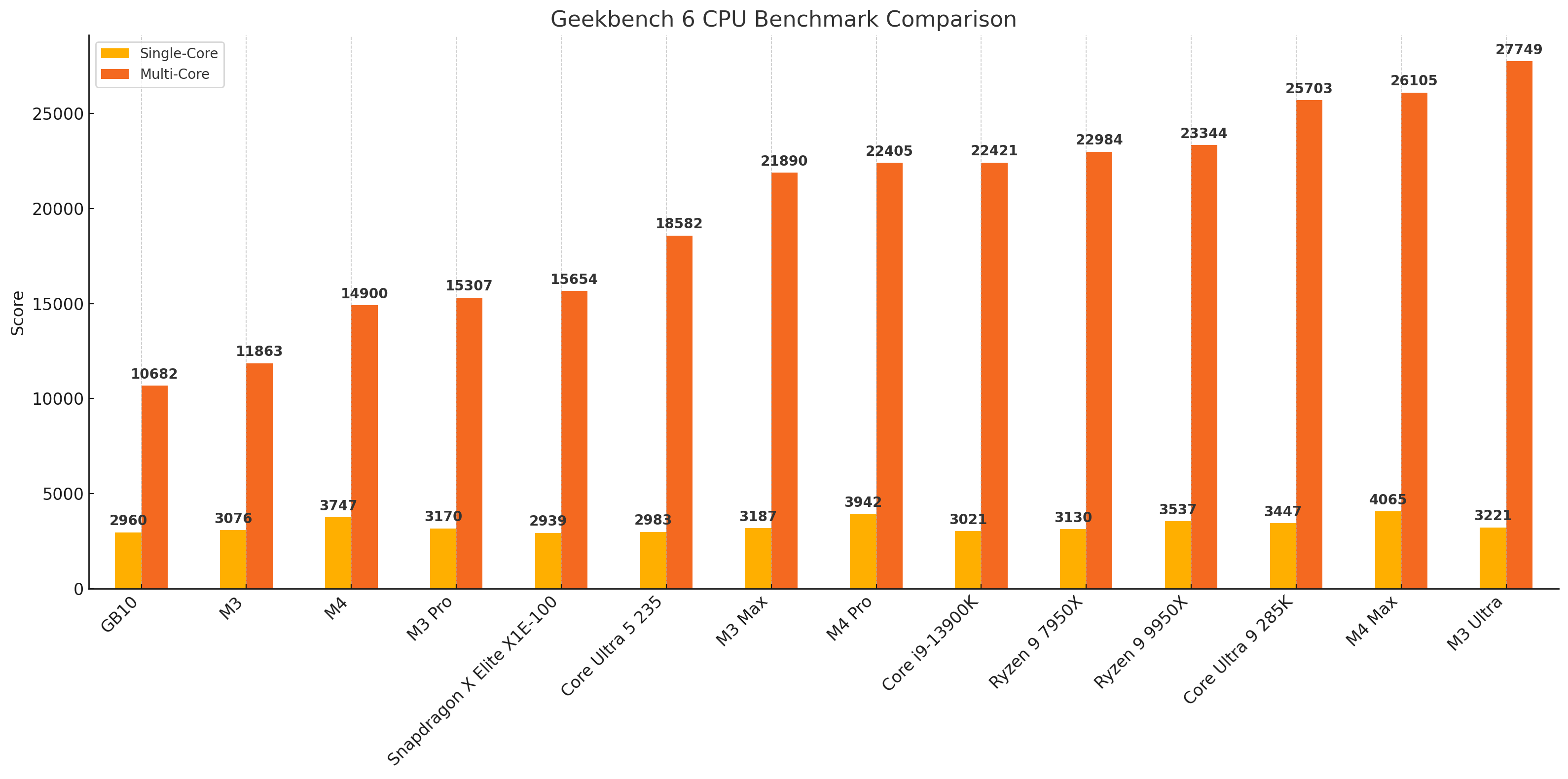
This assumption makes sense when considering GB10's general role as a solution for compact AI workstations. In AI workloads, the CPU is often relegated to scheduling, data staging, and light preprocessing tasks rather than being the primary computational driver. Hence, the CPU design prioritizes good-enough general-purpose performance while minimizing power draw and die area.
However, if we look more broadly, the situation seems mixed. Nvidia officially outlined its client PC processor ambitions by announcing its GB10 Superchip for compact AI workstations earlier this year at CES. However, a rumor is that the company will formally announce its N1 and N1X processors for desktop and laptop PCs at Computex later this month. The CPU configuration of N1 and N1X SoCs is expected to resemble that of GB10, so their compute capabilities will be close to GB10's. However, for now, GB10 does not impress in Geekbench 6 under Windows 11.
In summary, while Nvidia's GB10 CPU delivers modest single-thread performance that is compatible with Apple's M3, Qualcomm's Snapdragon X Elite X1E-100, and Intel's Core Ultra 5 235, it shows clear limits in multi-core scalability. This trade-off may either result from using a pre-release Windows 11 Enterprise Insider Preview or may even be intentional, given GB10's role in AI-centric workstations. Also, remember that Geekbench is an artificial benchmark, and the real-world performance of Nvidia's GB10 may be far more competitive.
Follow Tom's Hardware on Google News to get our up-to-date news, analysis, and reviews in your feeds. Make sure to click the Follow button.

 6 months ago
89
6 months ago
89
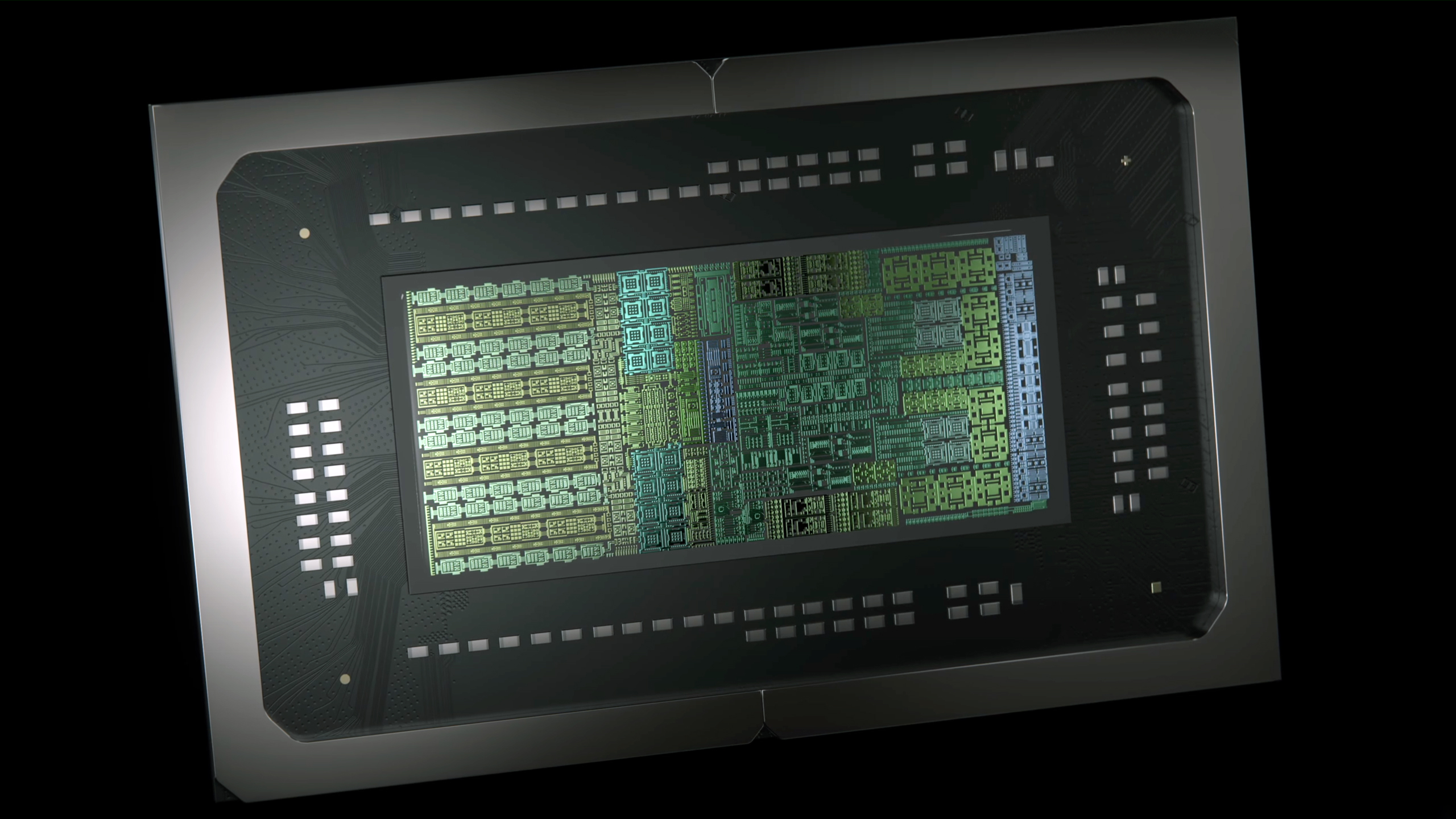

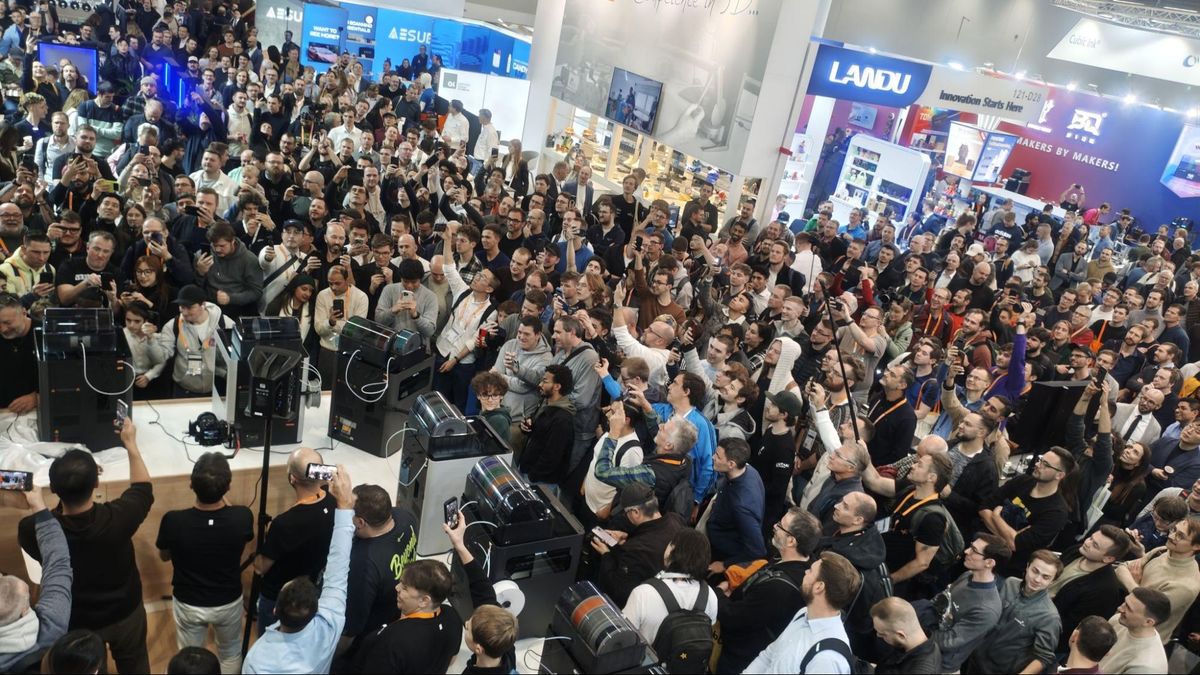
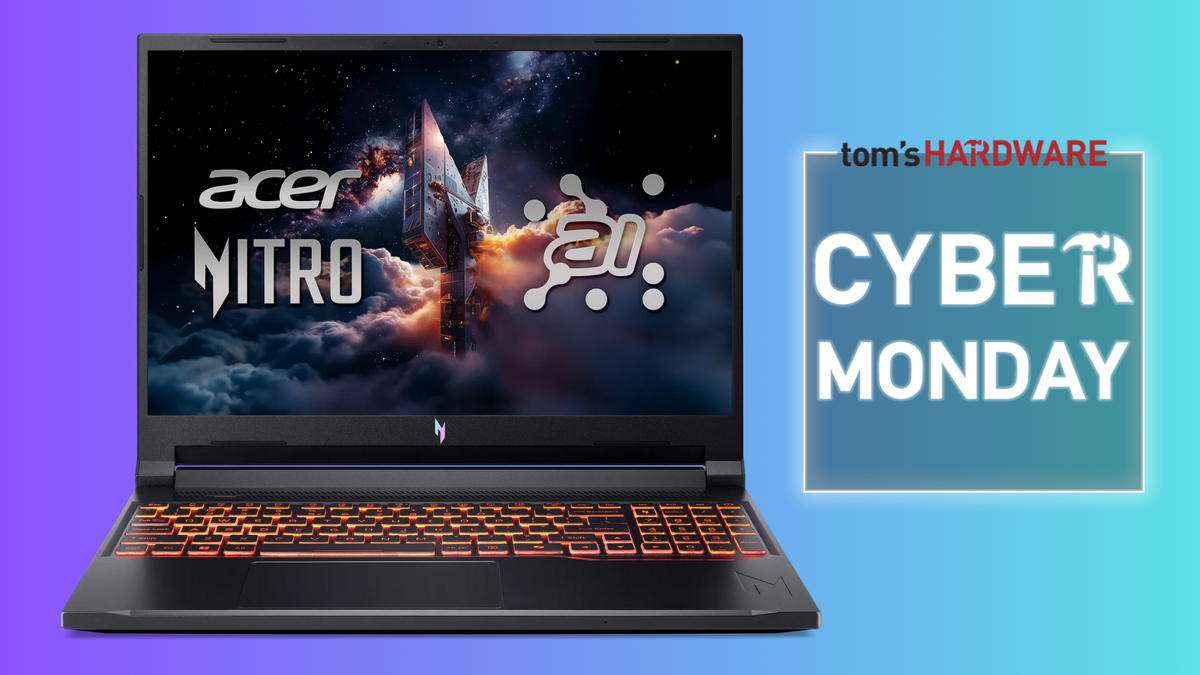
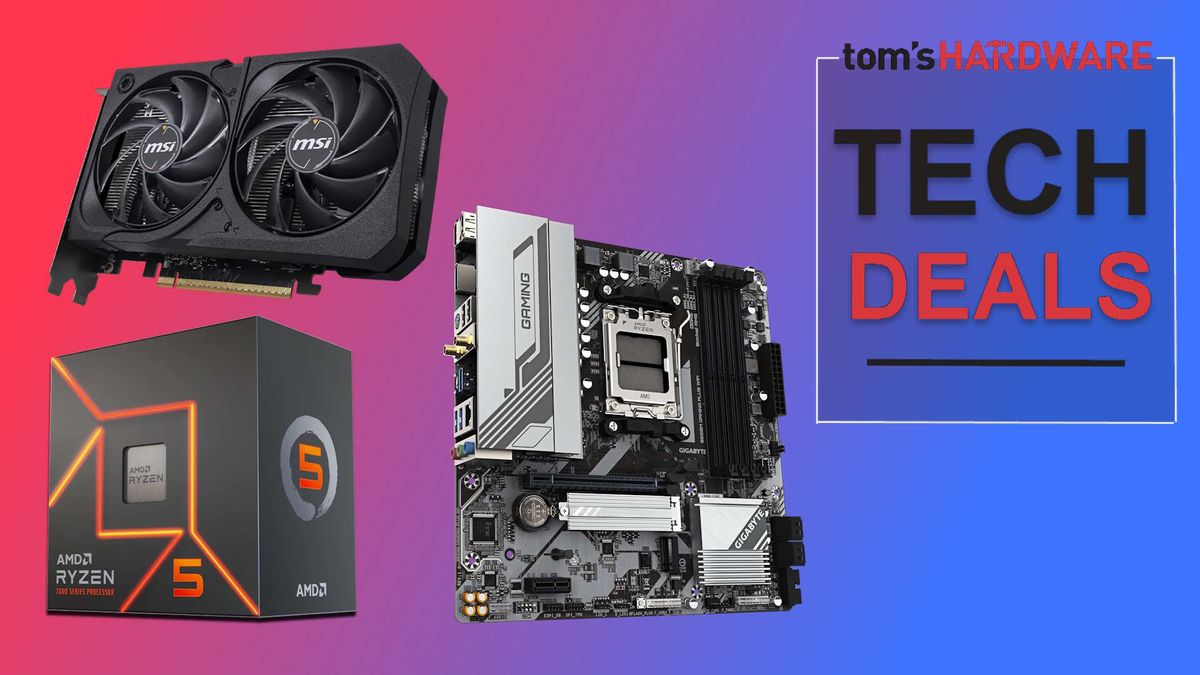



 English (US) ·
English (US) ·